Screen cleaning
Combined Sewer Overflows (CSO) are an essential part of a combined sewage system. In combined systems, rainwater mixes with wastewater, so in heavy rainfalls, the system has too much water in it. Without suitable measures in place, the sewage system could
overflow whenever it rains heavily.
CSO chambers allow the water level to rise naturally in times of heavy rain and then divert into an overflow pipe. The excess water is then piped away to either be stored in attenuation tanks or discharged at predefined points into the sea or waterways.
The CSO system, therefore, prevents sewage water from discharging where it is not wanted, for example, in the street!
A vital part of a CSO chamber is the screening system. This removes solids from the overflow water and keeps them within the sewage system rather than the overflow system. This prevents solid waste from being discharged into water ways. In effect, the
screens keep the worst of waste within the sewage system proper.
There are many designs of screens used in CSO systems. Often, the screens deployed will require regular cleaning to keep them free from debris. If debris builds up over time, the screen will not allow enough water to pass through it, and thus it becomes
less effective. As such, clogged screens can become a serious problem for water companies. If the problem gets too bad, it can result in uncontrolled discharges of raw sewage.
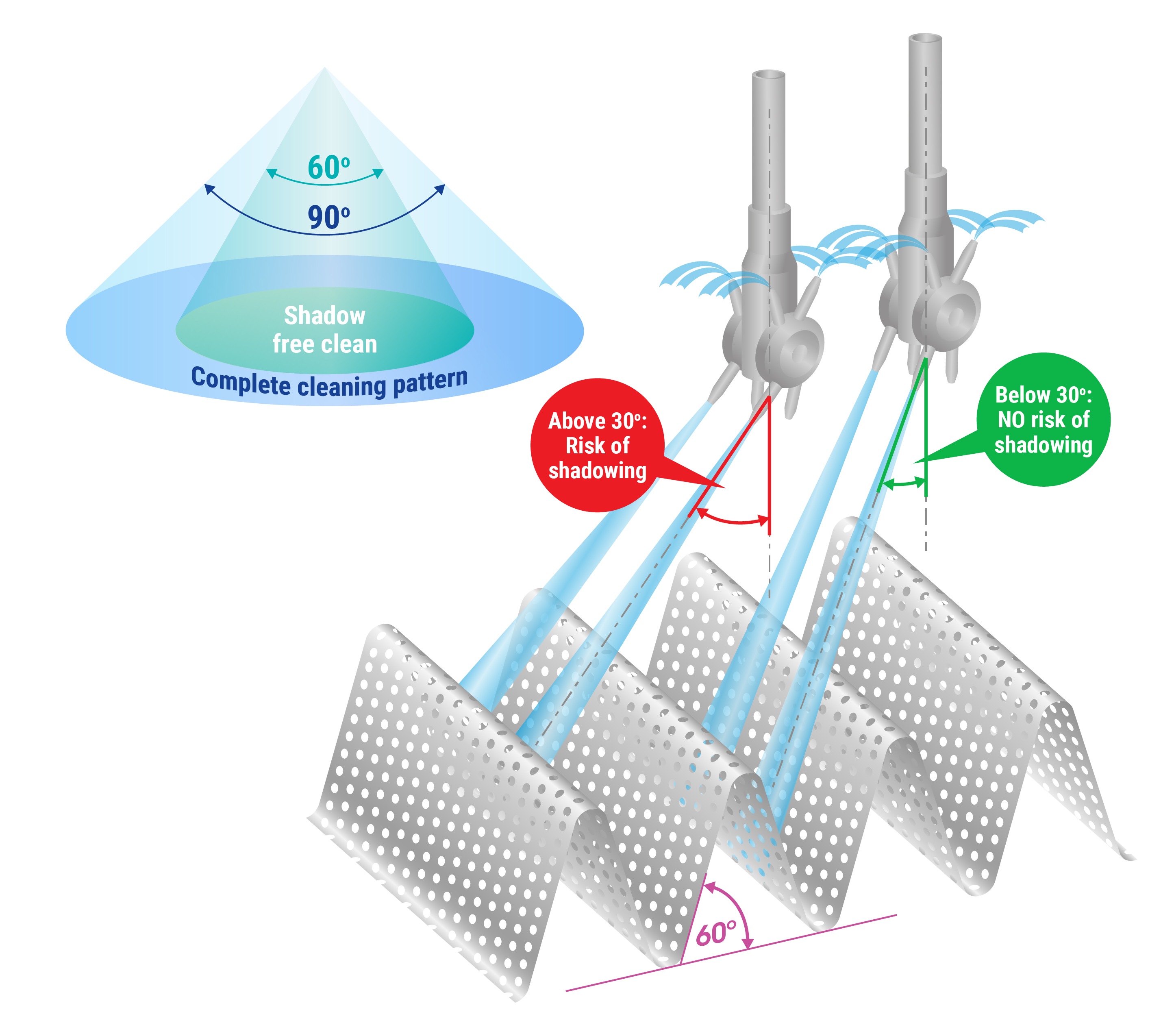
Wave screens
A common type of static screen used in CSO systems are wave form screens. These screens increase their overall surface area by have a wave form. The mixed sewage and rainwater is allowed to flow into a CSO chamber. It flows up through the screen and excess water is piped away into the overflow system. The screen will keep the majority of solids and debris contained within the sewage system itself.
The waveform of the screen increases its surface area and so increases its ability to effectively filter solids from large volumes of water. However, the wave nature of the screen also increases the opportunity for solids to become lodged within the screen
during operation. Furthermore, when washing down from the top, the structure of the screen will act to block any cleaning jets used and so inhibit effective cleaning.
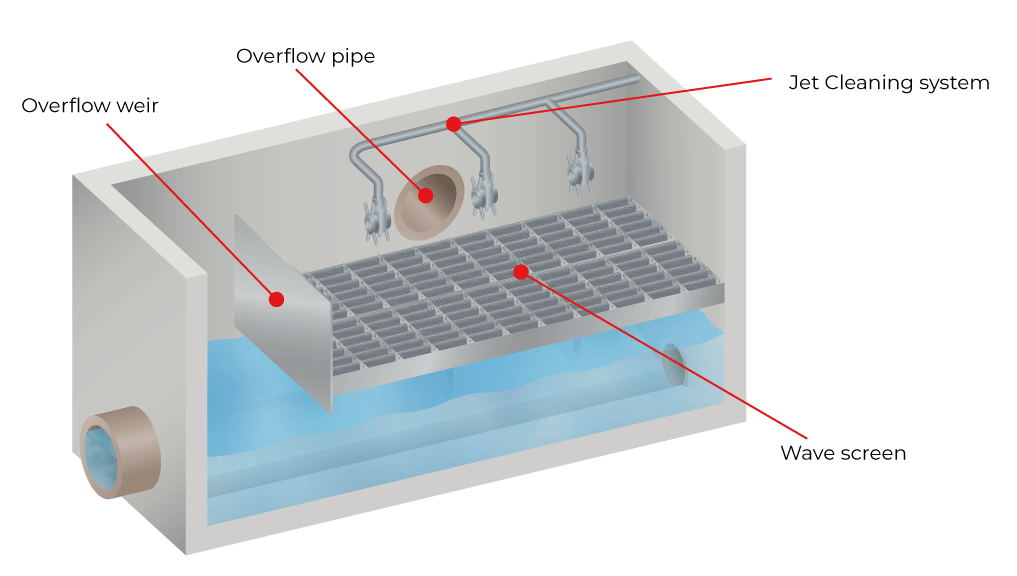 The solution
The solution
To overcome this, we have developed specific screen cleaning systems. The Screen Blaster is an 8-nozzle rotary jet cleaner. This is a variant of models commonly used in tank cleaning applications.
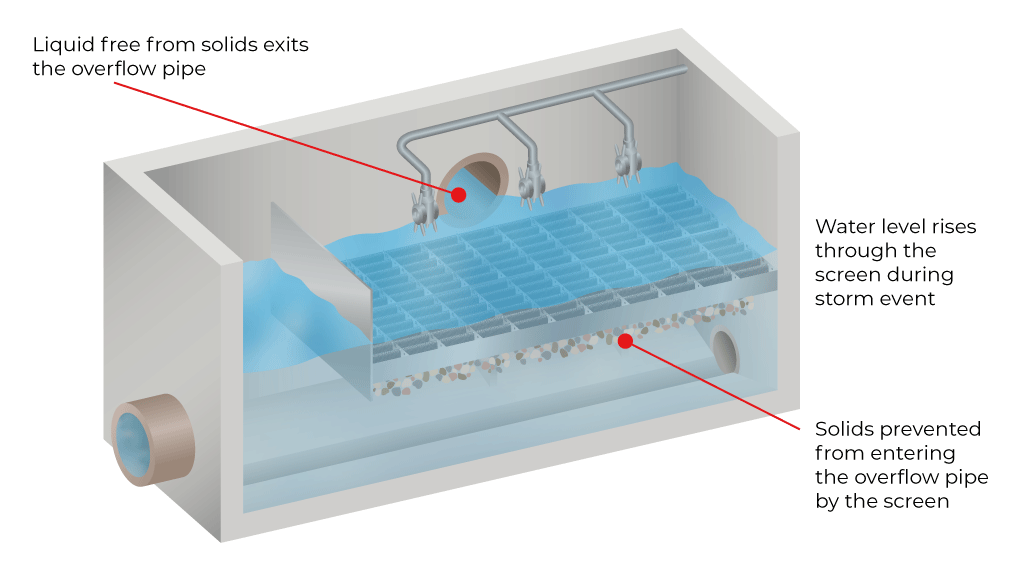 The system is entirely fluid-powered. Wash water is pumped through the cleaning head at between 8 and 10 bar pressure. This drives a turbine when rotates the cleaning head in two orientations. The wash fluid then passes through
8 cleaning jet nozzles. The result of this is that 8 powerful jets of water are indexed around the target surface such that they are brought to bear on the entire surface over a set cleaning cycle time. This mimics the effect of someone manually cleaning
the surfaces with a high-pressure hose.
The system is entirely fluid-powered. Wash water is pumped through the cleaning head at between 8 and 10 bar pressure. This drives a turbine when rotates the cleaning head in two orientations. The wash fluid then passes through
8 cleaning jet nozzles. The result of this is that 8 powerful jets of water are indexed around the target surface such that they are brought to bear on the entire surface over a set cleaning cycle time. This mimics the effect of someone manually cleaning
the surfaces with a high-pressure hose.
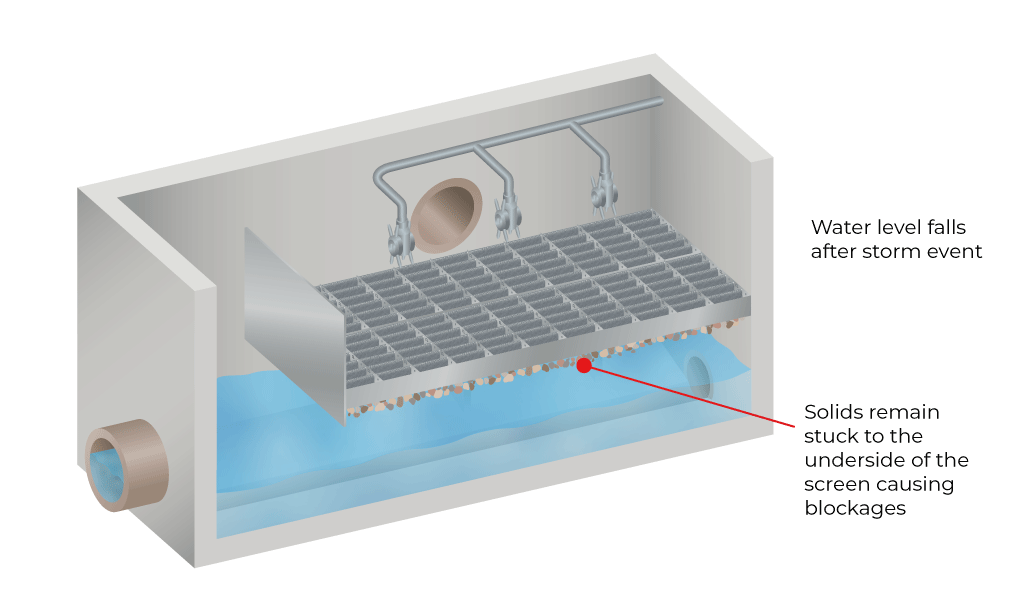
Normally, tank cleaning heads of this nature will bring their cleaning jets to work a complete 360° clean. The 8 Nozzle design of Screen Blaster, however, allows for the cleaning pattern to be restricted to as small as 90°. What this means
is that the powerful cleaning jets will impact each part of the surface below with a 90° (or more) cone.
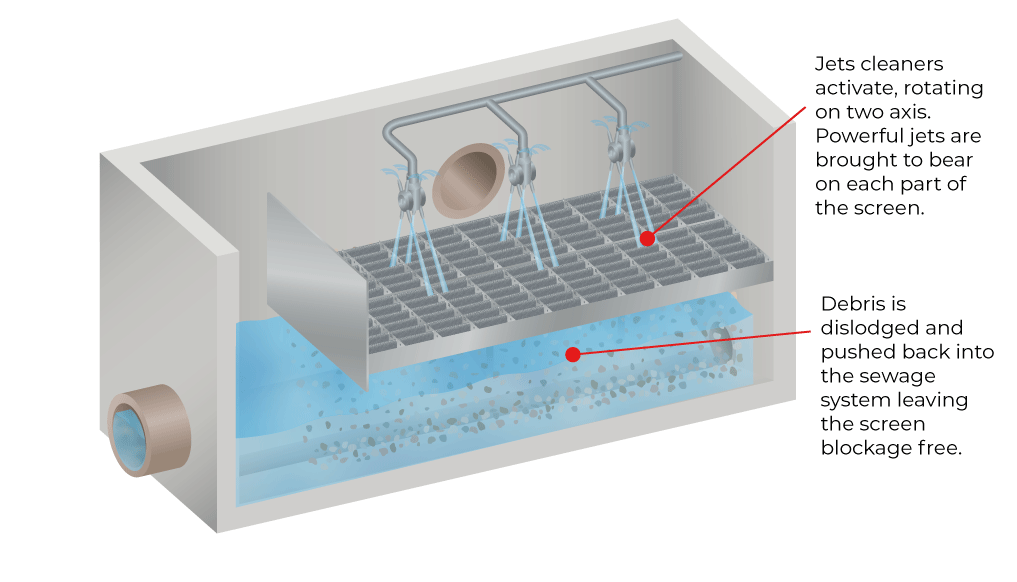
To overcome the natural blocking of the cleaning jets by the wave nature of the screen we design such systems so that as much of the screen is within a 60° cone of the Screen Blaster. This helps reduce the effects of shadowing. The cleaning jets
that impact the screen between the 60° and 90° cone still produce some cleaning and so are still effective but with the 60°, narrower cone, we get excellent cleaning of the screen. These simple design parameters ensure screens are kept
fully operational.